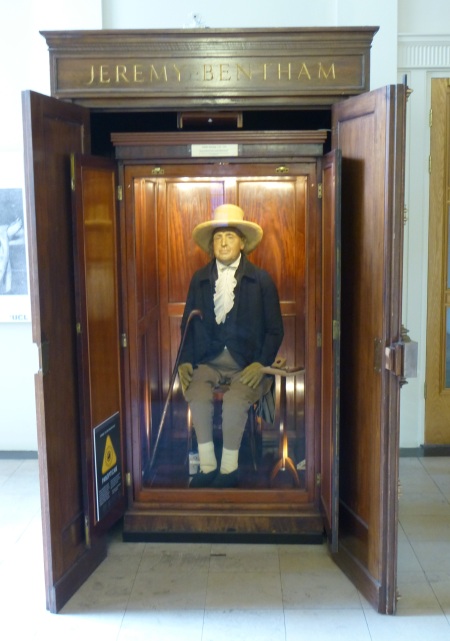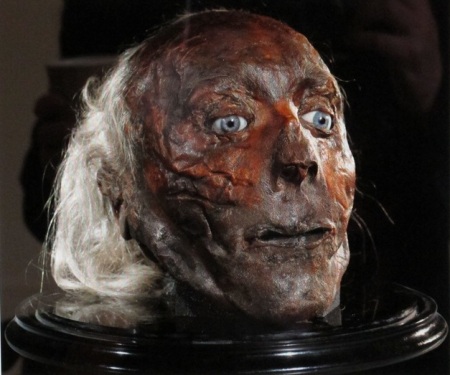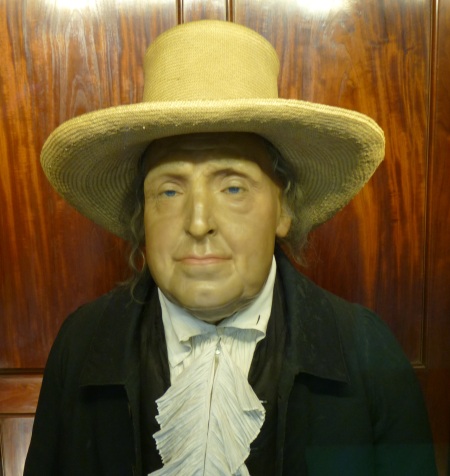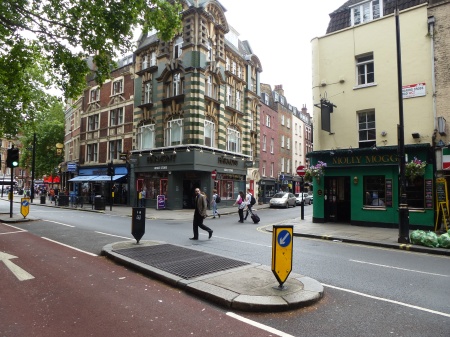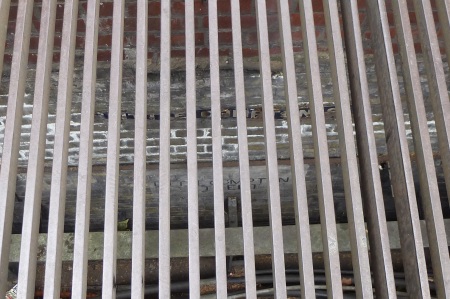Jeremy Bentham was apparently quite a character. As well as being an influential philosopher and jurist, he was probably the first ever Englishman to donate his body to medical science when he passed away in 1832. Even more unusual was his request that his body should then be turned into what is known as an ‘auto-icon’. This is exactly what happened, and Bentham’s auto icon can now be found in the cloisters of University College, London.
Sitting in a rather smart wooden case, Bentham’s auto-icon may looks like the kind of waxwork figure that you might expect to find nearby at Madame Tussaud’s. In fact this is Bentham’s actual body, with his articulated skeleton hidden below his smart outfit and his real hair sticking out from underneath his wide-brimmed hat.
The head which currently sits on the figure is indeed wax, but Bentham’s real head still exists. It used to be exhibited at the feet of the auto-icon, but curators recently decided that it was just too fragile to leave on display, and it is now safely kept in temperature-controlled storage. I must say I was rather glad to hear it – if you think the figure is kind of spooky, wait until you see the head…!
A number of strange tales have appeared over the years concerning this bizarre figure. One relates that Bentham’s body was put into storage by the College in 1955, with creepy consequences. It seems that Jeremy was not too happy about being hidden away, and his vengeful ghost went on regular rampages throughout the college until he was finally put back in his rightful place in the cloister.
Another story tells that the head was only taken off public exhibition after its theft by rowdy students from Kings College, who ended up using it in a game of football. It is also said that Bentham is still taken into meetings of the College council, and that it is recorded in the minutes that Mr Bentham is ‘present but not voting’.
The latter two are apparently just myths. As for Bentham’s ghost, well I will leave it up to you whether you believe that one.
